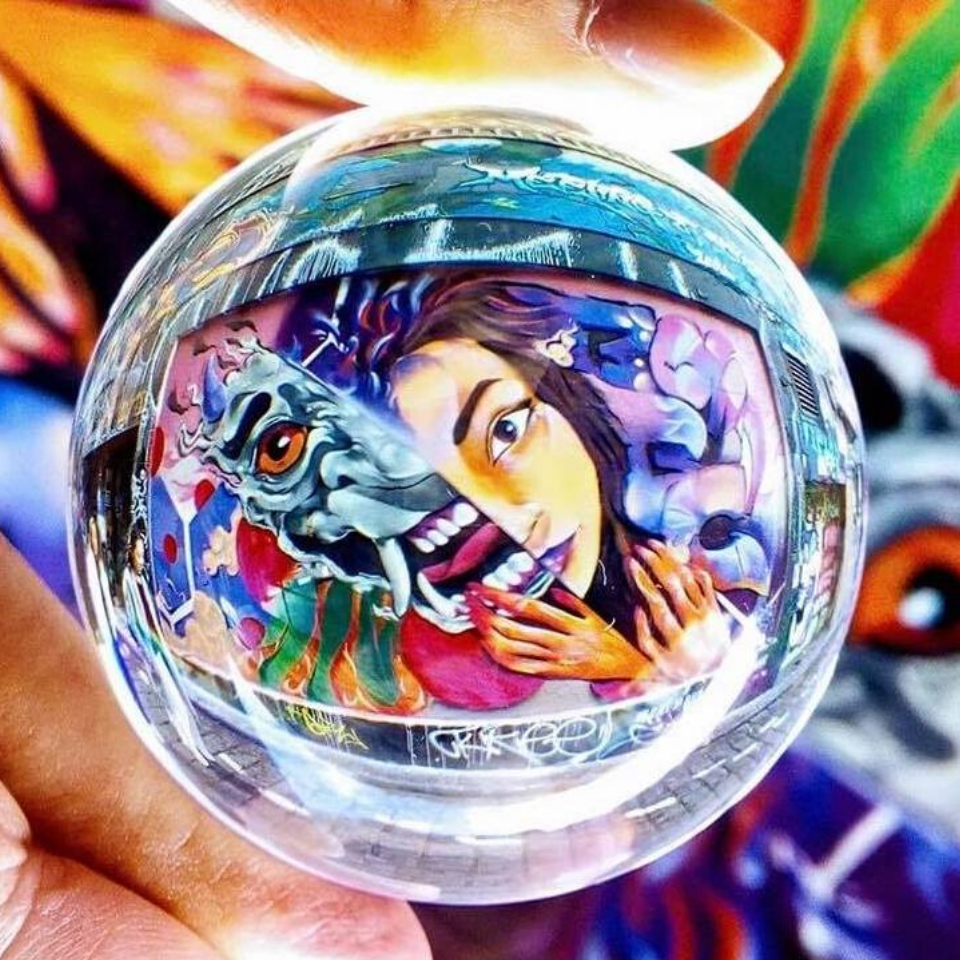Guest Post: Introduction to Lensball Photography
It's always fun having guest bloggers here at Live Snap Love, as it gives you a chance to learn something new, or just in a different way from me! So, today, we have Simon from Refractique on the blog to give you an introduction to lensball photography. Over to you Simon!
I came across lensball photography when I was perusing Instagram. As a landscape photographer and someone who loves to travel I came remember seeing some beautiful landscape photos from all around the world featuring the lensball. I was filled with wonder and have been hooked since! I even started a business to share this joyful hobby and distribute it!
It adds another dimension to virtually any type of photography however I most like using it in landscape photos because the wide angle lens the crystal ball provides. Check out the tips below if you’d like to learn more about lensball photography!
So Exactly what is a Lensball?
A lensball is a crystal ball which can be described as an external wide-angle lens. Other than creating a wide-angle, the ball also causes a refraction effect as light is bent through the glass sphere and the image inside the ball is inverted. You may have seen a similar effect with water, this is because the water and glass have a denser mass than light.
Refraction is particularly interesting as if you have the background behind the lensball on show, the viewer can see the contrasting images in the photo. Above is an example, where we see the inverted image inside the lensball and the background with its typical view. With lensball photography post editing we can not only invert the image inside the ball but also add a lot of other cool effects like make the ball appear to float in mid-air!
1) Position the lensball and consider the background
Firstly consider what are you trying to achieve with the photo? For example, you may want to contrast the landscape background with the image in the lensball. Or you may want to simply capture the lensball in its entirety such as in this beautiful street photo where you can see the yin and yang type concept of the mural captured beautifully. The lensball’s wide angle helps emphasize the artwork.
If you don’t have someone holding the ball then consider using something like a ledge or you can purchase a lensball stand which has a flat base or can be screwed on to a tripod. If you do have someone holding the ball ensure they are not covering the front of the ball in the shot of course. Position fingers on the sides or cup it from below.
Whichever approach you go for ensure the lensball features at a large enough size!
2) Focus / Aperture!
You may like to start at an F/4 and experiment from there as this way you get a bit of bokeh. This is where we blur out the background a little to accentuate the image in the lensball. You want to achieve a balance here so the image inside the lensball is still clear.
3) Consider Weather and Environment!
You want light shining through the ball so having the sunlight coming through is the best lighting condition. Shots at noon with a strong sun for example can cause too many shadows around the ball. Sunrise or sunsets other than providing good lighting conditions are also beautiful to take around a breathtaking beach landscape for example. Here in Australia we have so many options!
In saying the above you can still do wonderful looking night photography with the lensball.
4) Post Editing as Necessary
You don’t want to go overboard but perfectly cropping and considering saturation are two edits I always consider. Cropping is probably the most important because with the addition of the lensball we really want to get our image real estate perfect!
In terms of lensball specific effects as I described and linked to earlier you can invest the image inside the lensball (or invert the entire image!), make the ball appear to float or make like its smashing into tiny bits!
5) Be Creative!
Other than being a wide-angle that provides refraction effects, the lensball’s mobility allows for a lot of innovation in terms of positioning and how you can use it in photography. It allows you to get very creative so experiment and look on social media for more ideas if needed!
I hope you too will be inspired and find the lensball a lot of fun with your photography. Although it requires practice and experimentation it’s not difficult to pick up! Enjoy!
Simon Choi is an avid landscape photographer based in Melbourne, Australia. After departing a corporate career in Financial Services and Consulting, Simon pursued his passion for landscape photography, nature and creativity. He started distributing the lensball through Refractique, an online niche photography retailer. You can connect with him on LinkedIn.














